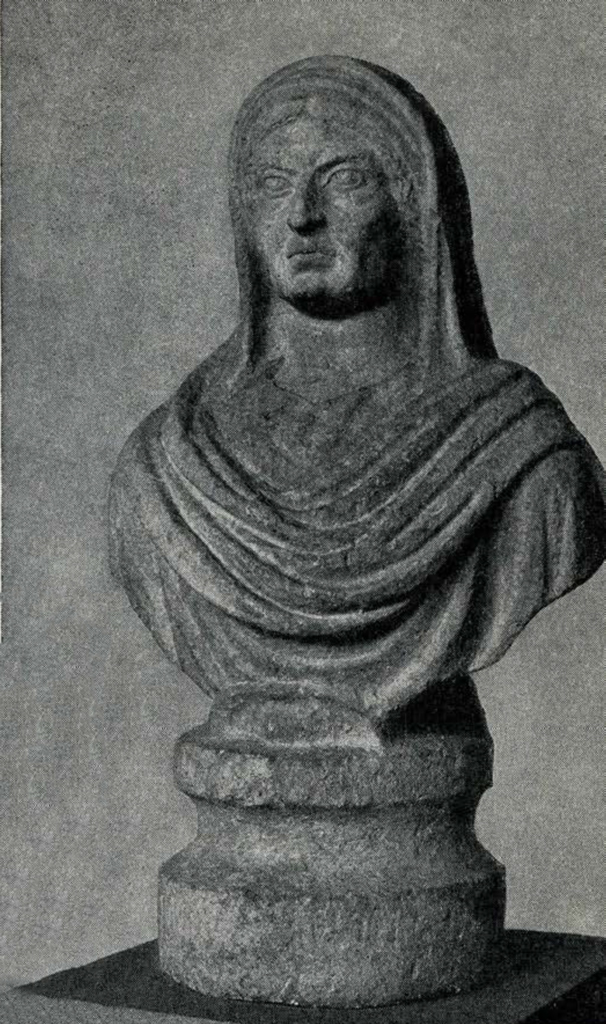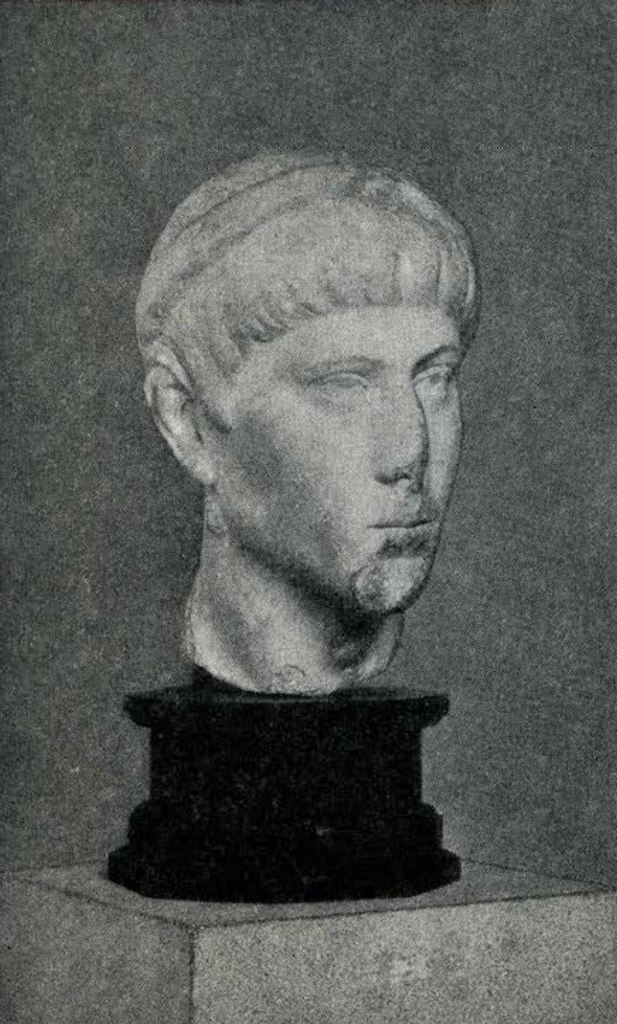THROUGH the generosity of Max, Freiherr von Oppenheim, the Museum has on display in the Roman Gallery of the Sharpe wing two Syrian sculptured portraits of the Roman period which are of exceptional interest. One of these, a marble head, was acquired at Bab, northeast of Aleppo, and represents a young man in the prime of life. Time has taken some toll from the surface of the stone; the nose, lips, chin and Adam’s apple are damaged, and the broad band which encircled the head and was tied in a knot behind has lost the portions which hung loose, except for one tip below the left ear. The back of the head was chiselled down to a perpendicular plane in antiquity, as if, perhaps, the portrait had been placed against a wall. The thick hair, arranged like a cap, terminates in a slightly asymmetrical curve above the forehead, and the right eye is noticeably higher than the left. The high cheek bones, the sharp spring of the nose from the forehead, the heavy eyelids, and the dreamy quiet expression of the face may be taken as racial characteristics, and the oriental character of the head is further indicated by the broad head band and by the earrings, traces of which still remain. The type of head band would seem, indeed, to indicate more-that the subject of the picture was a prince.

Museum Object Number: L-51-2

Museum Object Number: L-51-1
The other portrait from Bambyke-Hierapolis is a life-sized limestone bust of a woman, preserved without a break. Here is represented a woman in advanced middle age. The sagging lines about the nose and mouth and the furrowed brow betray her years, but her eyes indicate the wisdom and habit of command of a matriarch. The face is excellently framed, first by the carefully chiselled waved locks which are parted in the middle and fall on either side of the face and then by the strongly contrasting broad folds of the mantle worn over the head. The subject of the portrait seems to have been in this case not a Syrian but a Roman, a member of a ruling family.
Valentine Müller who published an exhaustive study of these portraits while they were on display in Berlin, would date the marble head of an oriental prince in the period which falls between the last quarter of the first and the first quarter of the third century A.D., and would incline to put it in the earlier part of this period at a date not far removed from 200 A.D. The portrait bust is later, and is assigned tentatively to the closing years of the third century A.D. The style shows a blend of Greek, Roman, Mesopotamian, and Syrian elements, and thus reflects the mixture of races which for centuries has characterized the inhabitants of the Near East. The Museum is grateful to Baron von Oppenheim for the opportunity of showing these portraits in Philadelphia.
E. H. D.

